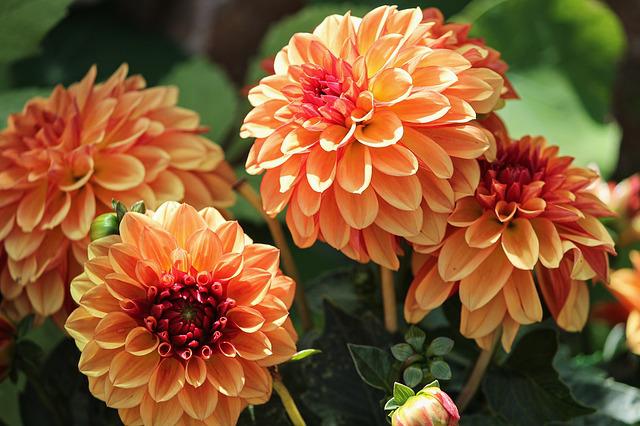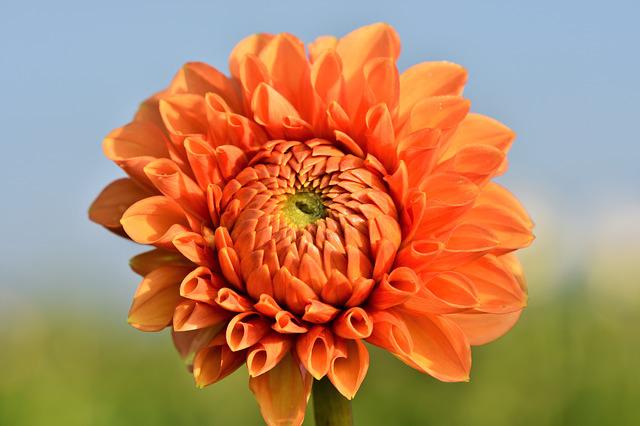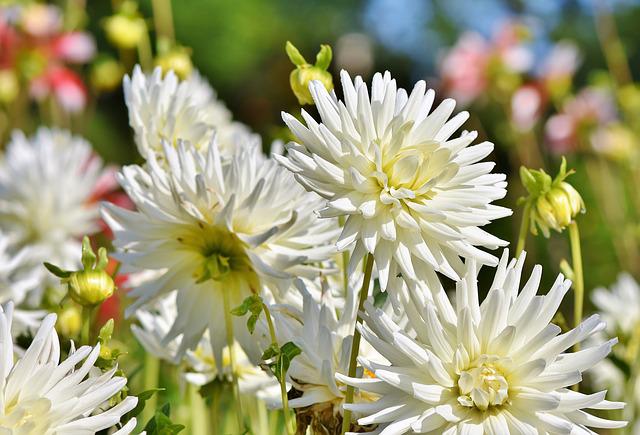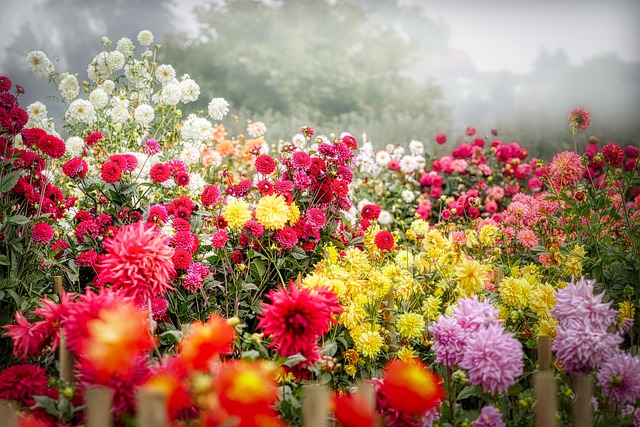Are Dahlia Sun Plants or Shade Plants? Know Your Favorite Flower Sun Requirement

Dahlias prefer full sun exposure but will tolerate partial shade if it is provided during the hottest part of the day. Dahlias, however, flower best in locations that can maintain moisture and receive at least six to eight hours of direct sunlight per day.
Dahlias add a touch of drama to the garden in the summer and fall with their imposing, sculptural flowers. Understandably, many dahlia lovers try to maximize blooms, given their popularity in floral arrangements. And yes, dahlias can be dried by hanging them upside down in a cool, dry place with good ventilation. Once the flowers are fully dry, they can be used in various crafts or displayed as a long-lasting decorations.
Table of Contents
Best Conditions for Growing
People often don’t know whether dahlias like the sun or the shade. The fact that dahlias come from Central America and come in many different types makes it hard to figure out where they should be planted.
To grow beautiful dahlias, you need to know how the plant would normally grow and what needs to be considered in different growing locations.
Dahlias can be grown as annuals in zones 3–7, which are cooler and further north. The tubers can be dug up and taken out of the ground as soon as a killer frost is predicted.
Dahlias will grow as herbaceous perennials in zones 8–11, just like in their native Central America. However, if your temperatures routinely exceed 100°F (38°C), you must plan for afternoon shade when temperatures peak. In zones 6-7, some gardeners might also be able to keep their tubers in the ground through the winter. In these border areas, watch for the first frost that will kill the plant and for it to die back in the fall. At this point, you should cover the tubers with pine needles, straw, or mulch to keep them from getting damaged over the winter.
Once you know what climate zone you live in, thinking about the microclimates in your garden can help you choose the best place to plant. If there is a wall or other vegetation nearby, it can make the area warmer and more humid.
Climate and Location
Dahlias prefer sunlight because they are native to mountainous, warm-temperate regions of Mexico, Columbia, and Guatemala. However, they are mostly found in oak and pine woodlands, indicating that they have adapted to environments that offer protection from moisture loss in more challenging circumstances like intense heat and arid winds.
True full sun in Australia has the potential to cause dryness. So in many areas of the country, shade is required for growing the ideal dahlia.
Dahlias generally thrive in a location that receives full sun and shade in the afternoon. The best place to do this in Australia is typically one that faces east. The sun tends to be harsher in the afternoons, especially during Australia’s hot summers.
Since the Aztecs were the ones who first cultivated dahlias, they were Mexico’s national flower. Dahlias bloom at the end of summer and the beginning of fall.
Spanish explorers brought dahlias to Europe in the early 1500s, which delighted many historical gardeners. But when they tried to grow the tuberous plant in the cooler, northern climate, they ran into many of the same problems as gardeners today.
Slowly, the dahlia plant became more popular and was grown more widely in Europe as a supposed source of starch until the mid-1800s. By that time, dahlias were well-known garden favorites because of their bright, eye-catching flowers.

Time and Sun Exposure
The amount of sun that dahlias need at different times depends on several things. This includes whether or not they’re in pots, where you planted them, and where you live. For example, in Australia, giving your dahlias six hours of the full sun would cause them to dry out, but in northern Europe, it might be necessary to give them six hours of full sun.
The ideal time to plant dahlia tubers is in the spring, from mid-April to early June, depending on where you live. Generally, it’s best to face your Dhalias toward the morning sun so they have shade in the afternoon. The afternoon sun is often stronger and harsher. This is better for some species but not for dahlias, which prefer the gentler morning sun.
You shouldn’t water your tubers until the first shoots come up when you plant them. If you do, mold and root rot could happen. When you plant the tubers, the soil should be loose, dry, and warm, 55-60°F (13-16°C). They shouldn’t be watered immediately unless you live in an extremely dry and hot area.
After four weeks, shoots should start to come up. Then, once they are more established, you can water them regularly.
Do Dahlias Require Direct Sun?
Dahlias require some full sun, but they quickly lose color in intense heat. They cannot endure a day of direct sunlight without suffering. Exposing your dahlia to direct sunlight for at least 6 is more than enough for dahlias, though 8 hours is not excessive if the weather is mild. Give your dahlias 6 hours of direct sunlight, preferably most of those hours in the morning. Your dahlias will flower later in the summer and well into the fall if you do this.
Will Dahlia Grow in Indirect Sunlight?
Indirect sunlight will not cause dahlias to perish or wilt. They do, however, require sunlight to survive. Mexico, a country with a lot of sunshine and warm weather, is where dahlias first appeared. While too much direct sunlight can harm them, not enough direct sunlight can still be detrimental in other ways. Dahlia can thrive in filtered light. Indirect sunlight will produce fewer, smaller flowers, but they will still bloom on schedule.
The dahlia plant may grow excessively tall in its quest for sunlight and produce fewer flowers. Dahlias naturally reach a height of 5 feet (1.5 meters), so you probably don’t want them to get any taller because they frequently need to be staked. The best solution is to place them where they receive morning sun and afternoon indirect sunlight. To produce the best flowers possible, combine this technique with our advice on dahlia pruning.

Do Dahlias Tolerate Shade?
If you try to grow your dahlias in the shade, you won’t be pleased with the results. Dahlias might be susceptible to fungus infections if they don’t get enough sunlight. Alternately, the leaves and flowers may start to grow mildew. Dahlias grown in complete shade may not even bloom.
The fungus disease can affect shaded dahlias. Dahlias are probably your choice because of their beauty and vibrant colors, which give your garden a striking appearance. Even if your dahlias manage to bloom when you try to grow them in complete shade, their color may be light and appear almost faded. So even though they usually don’t die in the shade, you won’t get the outcomes you’re hoping for.
What Happen If Dahlias Don’t Get Enough Sun?
Dahlias need some full sun, like all other flowers, for photosynthesis to occur. Even though 6 hours a day is ideal, they can get by on less. Lack of sunlight, however, will result in dahlias producing smaller, less lush flowers and wilt quickly.
Premature flower petal loss is another possibility. Dahlias thrive in the morning sun because it gives them enough light to survive. By offering morning sun and afternoon shade, your aid in preventing heat scorch and other issues brought on by prolonged sun exposure.
Can Dahlias Get Too Much Sun?
Dahlias that are overshaded may not bloom until very late in the season. Once they have fully bloomed, they may only live a very short time. Another possibility you want to avoid is sun scorch. The leaves show signs of browning and curling, and the flower petals are falling off too soon. Wilting is another well-known symptom of excessive sun exposure.
If you cannot plant your dahlias in a location where they will receive morning sun, think about using shade cloths that you can hang to block some of the afternoon light. The best fabrics are those with a 30–40% blocking capacity because they will keep food from wilting and scorching. Increase deep watering to three times weekly once the driest part of the summer arrives. This occasionally averts some of the heat- and sun-related damage. However, the best way to make the most of your lovely flowers is still to provide adequate shade.
Dahlias Prefer Warm, Not Hot Temperatures
How much sun do dahlias require? Like most flowers, dahlias have been cultivated for a longer period. These flowers are indigenous to the mountains of southern Mexico and Central America, where summer days can reach 80°F and nights can be as cool as 65°F.
Similar growth conditions exist along the Pacific Northwest Coast, which is why gardeners in the region cultivate such beautiful dahlias.
Dahlias may exhibit signs of stress if temperatures increase during the day or night. Heat or cold stress effects on these flowers are stunted growth, poor flower production, misshapen flowers, and heightened susceptibility to pests and diseases.
What If There Is No Shade Where You Are Cultivating Dahlias?
If there is no shade where you are growing dahlias, and you live in a warm climate, you should consider constructing a shade structure. It is the perfect solution for gardens with no shady areas.
Utilize a durable polyethylene shade cloth to construct your shade. Depending on the weave, you can block as little as 20% or as much as 80% of the light. Dahlias will continue to thrive with 40% of the recommended light. This fabric also protects the flowers from the damaging effects of heavy rain and hail.
If there is too much sun, it is best to mulch your plants to cool them down. Ensure that your mulch is between 2 and 3 inches thick and that it allows water to permeate the soil. The optimal time to apply mulch is early June when your plants are flourishing and before the temperature rises.

